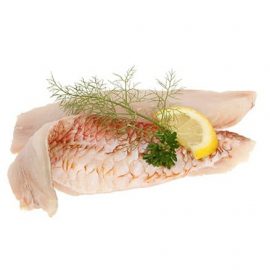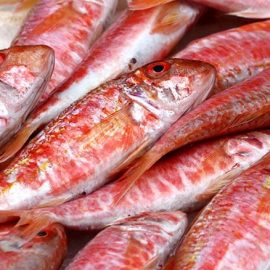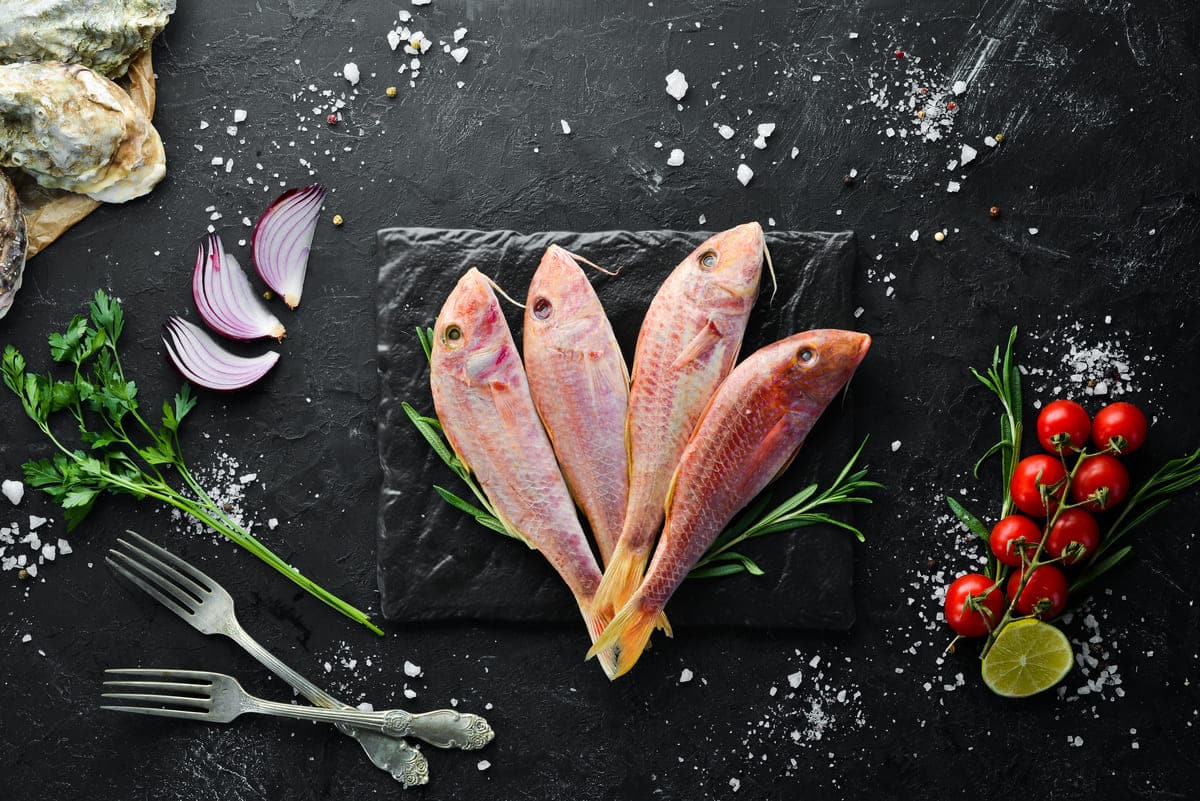
Introduction
Red Mullet is a small, colourful fish found in oceans and seas worldwide. It is known for its distinct red colour and delicate flavour. They are available between May and November when spawning isn’t taking place to protect stocks. Suitable for baking whole, grilling or barbecuing, and pan-frying for the best pan-fried red mullet.
Red Mullet has a long history of human consumption that dates back thousands of years. The fish is still popular as an ingredient in many cooked and raw dishes.
Description & Characteristics
The red mullet or surmullets are goatfish species, Mullus barbatus and Mullus surmuletus. It is in the family Mullidae, which is composed of about 78 species in 15 genera.
Red mullets have impressive characteristics that make them stand out among other fish species. Their bright reddish-orange colouration is one of their most distinguishing features and gives them their common name. They also have two long barbels on either side of their mouth, which they use for sensing prey in deep waters. They also possess large eyes that help them see in dark environments such as caves or sunken ships.
Red mullets also have an oval-shaped body, with two dorsal fins and a single anal fin. The front part of their bodies is covered with large scales, and they have long pointed heads. They range in size from 8–30 cm (3–12 inches).
These unique attributes make red mullet an ideal choice for fishing enthusiasts looking for something special on their following catch.
Etymology
The etymology of red mullet is a subject that scholars have long contested. It is believed to originate from the ancient Greek ῥοδόμυλλος, which translates to ‘red fish’. The French name for the species is rouget, which also translates to ‘red fish’. This suggests that the naming of this species may have originated in Greece or France. There are many other theories surrounding the origin of its name, including that it was derived from its red colour or named after someone called ‘Mullet’.
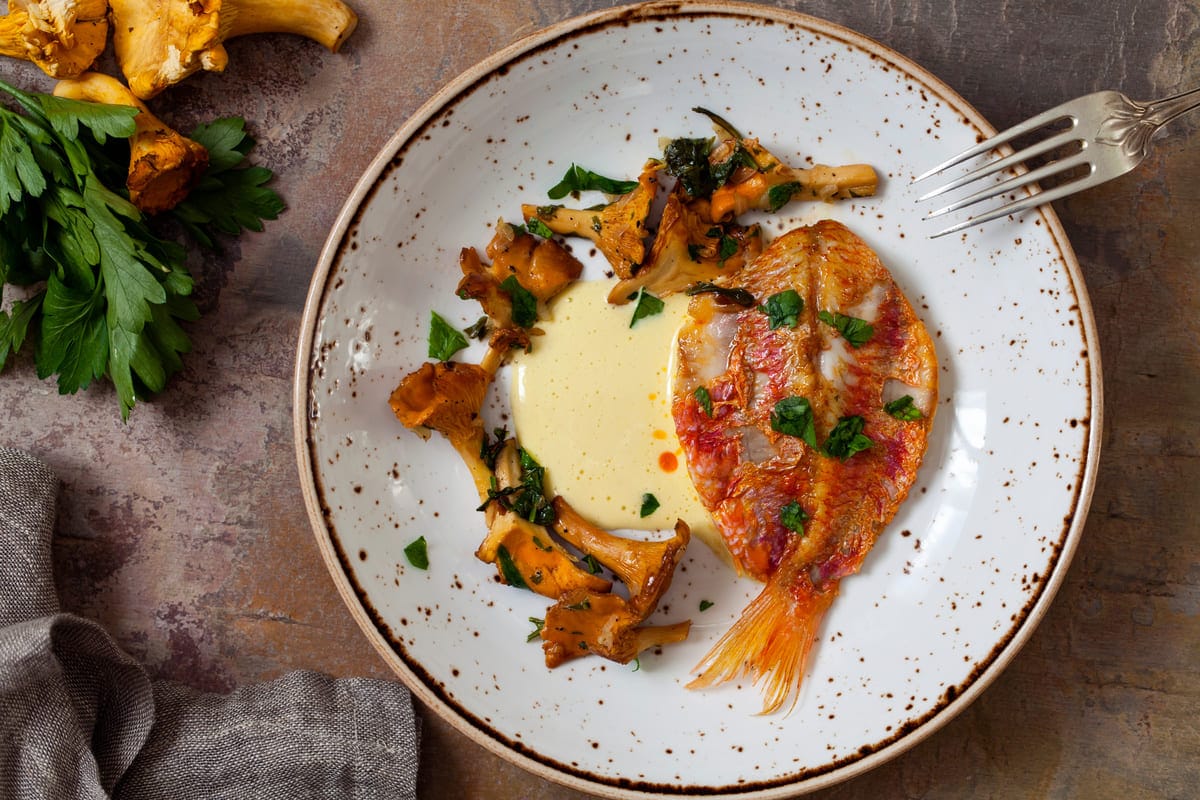
Habitat And Distribution
The Red Mullet is a fish in the Mediterranean Sea and along the Atlantic Coast. Its natural habitat is coastal areas, such as rocky shores, estuaries, and shallow waters up to 200 meters. Red Mullet are primarily found in the Eastern Atlantic Ocean, from Norway in the north to Senegal in the south and the Mediterranean and Black Seas.
This fish can tolerate a wide range of temperatures and salinity levels. It prefers temperatures between 10-20 degrees Celsius and salinity between 30-36 parts per thousand.
Red Mullet’s Diet
The diet of red mullets consists mainly of small invertebrates, such as crustaceans and molluscs. They feed by sifting through the mud or sand on the sea floor, searching for food. In some parts of their range, they may also feed on algae, detritus, and fish eggs.
Red mullets are opportunistic predators that take advantage of any available food source in their environment. However, they are highly selective feeders and prefer to consume smaller prey items that can easily be swallowed whole. They have even been consuming live prey from the ocean floor, such as crabs and worms.
Due to their preference for small prey items, red mullets often require large amounts of energy to meet their nutrient needs. As a result, they tend to move between different habitats to access food sources throughout the year. This behaviour helps them avoid competition with other fish species that occupy similar areas and also helps them maximise their energy intake from seasonally abundant food sources.
Life Cycle of Red Mullet
The journey of the red mullet’s life cycle is a winding road that varies considerably based on location, temperature, and other environmental factors. At each stage of their growth, they must use their resources to survive in their environment.
As larvae, they feed on plankton which helps them transition into juvenile forms more quickly. Juveniles rely on a diet of small crustaceans, such as copepods, to increase their size and strength. Once they reach adulthood, they feed mainly on fish or invertebrates like crabs or molluscs, which provide them with the nutrition needed for a successful spawning season.
Red mullets change their migratory patterns depending on when temperatures peak or drop; this helps them find food sources more efficiently throughout different seasons and years. In addition, since spawning can be affected by water levels fluctuating due to rain events or drought periods, this impacts the population sizes of red mullet adults and ultimately affects future generations.
Red Mullet Fisheries
According to the Food and Agriculture Organization of the United Nations (FAO), around 250,000 tonnes of red mullet were caught worldwide in 2016. This figure shows that red mullet fisheries are a significant source of income for many fishermen across Europe.
There are several methods used when it comes to fishing for red mullets. Fishermen may use netting techniques such as gillnets, trawls or traps. Trawls specifically target deeper waters, while gillnets catch fish when they try to swim through them. Traps are mainly used by recreational fishermen, who take advantage of their ability to capture small amounts of fish.
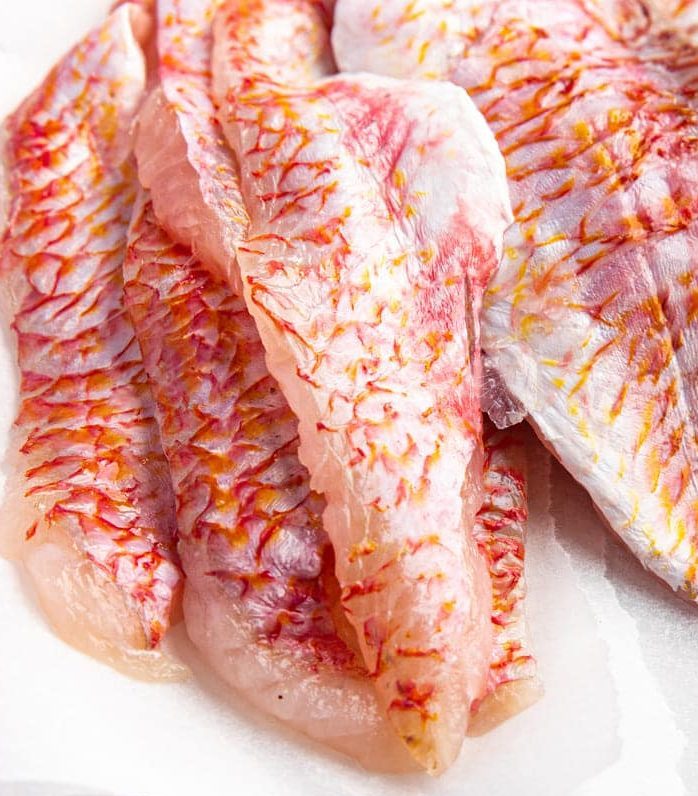
Sustainability
The sustainability of red mullets is a crucial factor to consider when discussing this species. While many people view the red mullet as a delicious, luxurious seafood option, it is essential to note that its population is under threat due to overfishing. Indeed, with global fishing, in general, becoming an area of increasing concern, the sustainability of red mullet fisheries has become a significant issue.
However, this need not mean sustainable management policies cannot be implemented. Many organisations, such as the Marine Stewardship Council (MSC), are actively working to ensure that red mullet populations remain healthy and are managed responsibly.
Here are three key ways they help:
- Working with local fishing communities to ensure their practices are sustainable
- Developing certification programs for fisheries to confirm their commitment to sustainability
- Assessing stocks of fish against scientific data and providing advice on how best to manage them
Some restaurants have also taken steps toward more sustainable seafood consumption by utilising responsible sourcing options for the red mullet they serve. This includes verifying the origin of their seafood and ensuring that suppliers adhere to good environmental practices. By doing so, these restaurants demonstrate their commitment to preserving marine ecosystems and promoting sustainable fishing methods. This helps guarantee that future generations can enjoy this delicious fish for years.
Red Mullet As Food
Red Mullet has become a popular seafood delicacy across many cultures, with its delicate flavour and juicy texture. It has a unique taste that can be described as sweet, mild, and buttery.
Red mullet can be cooked in various ways to bring out its distinctive flavour. Some of the most common methods include grilling, pan-frying, baking, steaming or boiling.
Grilling produces a smoky flavour, while pan-frying gives it a crispy coating. Baking brings out the fish’s natural sweetness, while steaming or boiling allows maximum moisture retention.
The preparation of Red Mullet requires careful consideration to ensure it is adequately cooked and does not lose its flavour or texture. To get the best results:
- Choose fresh fish with clear eyes and vibrant skin: Look for bright red scales with no signs of discolouration on the body or fins.
- Clean the fish thoroughly: Remove any scales, guts, or bones before cooking.
- Marinate the fish: This can help enhance the flavour of the mullet and make it more tender when cooked.
- Cook quickly over high heat: Red Mullet should be cooked at high temperatures for short periods to maintain its juicy texture and keep it from becoming tough and dry.
With proper preparation techniques, Red Mullet can be transformed into an exquisite dish that will tantalise your taste buds with its unique flavour profile. When cooked correctly, this delicacy can delight even the pickiest eater with its succulent texture and subtle sweetness that lingers on your tongue long after you’ve enjoyed your meal.
How To Prepare Red Mullet
The most commonly used method involves pan-frying the fish after coating it with breadcrumbs or flour. This method allows for a crunchy texture on the outside and a moist, tender texture on the inside.
Other methods of preparing red mullets include steaming, baking, roasting, grilling, and poaching. Baking requires that the fillets be placed in an oven-safe baking dish and covered with butter or oil before being cooked at moderate temperatures for about twenty minutes or until the flesh is opaque.
Grilling can be done over charcoal or gas grills; however, care should be taken to ensure that the temperature does not get too high, as this will cause the flesh to become dry and tough.
When poaching red mullet, it is vital to use a low simmering heat to avoid overcooking it. Once cooked, it can be served with butter or herbs added for additional flavour.
Best Side Dishes Paired With Red Mullet
Red mullet is a type of fish that many people enjoy due to its flavourful taste and versatility. It is often served as a main course but can also be paired with other ingredients to create a delicious meal. When it comes to selecting the best side dishes for red mullet, there are several options available.
The first choice is to go with classic Mediterranean flavours. Dishes such as roasted potatoes, ratatouille, and tabbouleh are all traditional sides that pair well with red mullet’s delicate flavour and texture. Then, finely chop parsleys to put on top. These dishes bring out the fish’s natural sweetness and provide an array of flavours in every bite.
Alternatively, lighter sides such as grilled vegetables or quinoa salads can help balance the richness of the fish and give diners a refreshing break from heavier dishes.
For those looking for something unique, Asian-inspired sides such as stir-fried vegetables can make a delicious accompaniment to red mullet. These dishes provide an appealing contrast in flavours and textures that will tantalise the taste buds in unexpected ways. From simple steamed rice to sautéed bok choy, there are plenty of options for adding an exciting twist to any meal featuring red mullet.
Like pieces in a puzzle, these side dishes complete any meal by bringing together complementary tastes while still allowing each flavour profile to shine through on its own.
Popular Red Mullet Recipes
Popular recipes for red mullet vary depending on the region and culture but typically involve grilling or frying. The fish is often seasoned with garlic, salt, pepper, herbs, and citrus juice. This adaptable fish can be pan-fried, roasted, poached, or steamed, as well as battered and deep-fried. In some areas of France and Spain, it is served raw in mixture of salads.
Red mullet’s liver recipe is a delicacy, especially when fried with garlic cloves and fresh herbs. Regardless of how you prepare the fish, keep the livers as they are a real treat.
Red Mullet is also delicious in stews, pies, and casseroles and holds up well to more robust flavours. It pairs very well with other seafood, such as a bowl of clams, mussels, and prawns, sprinkle with basil and other fresh herbs.
The fish loin is the finest oven-roasted with a herb crust, while for excellent, simple red mullet fish fillets, pan-fry in olive oil and butter before finishing in the oven on low heat.
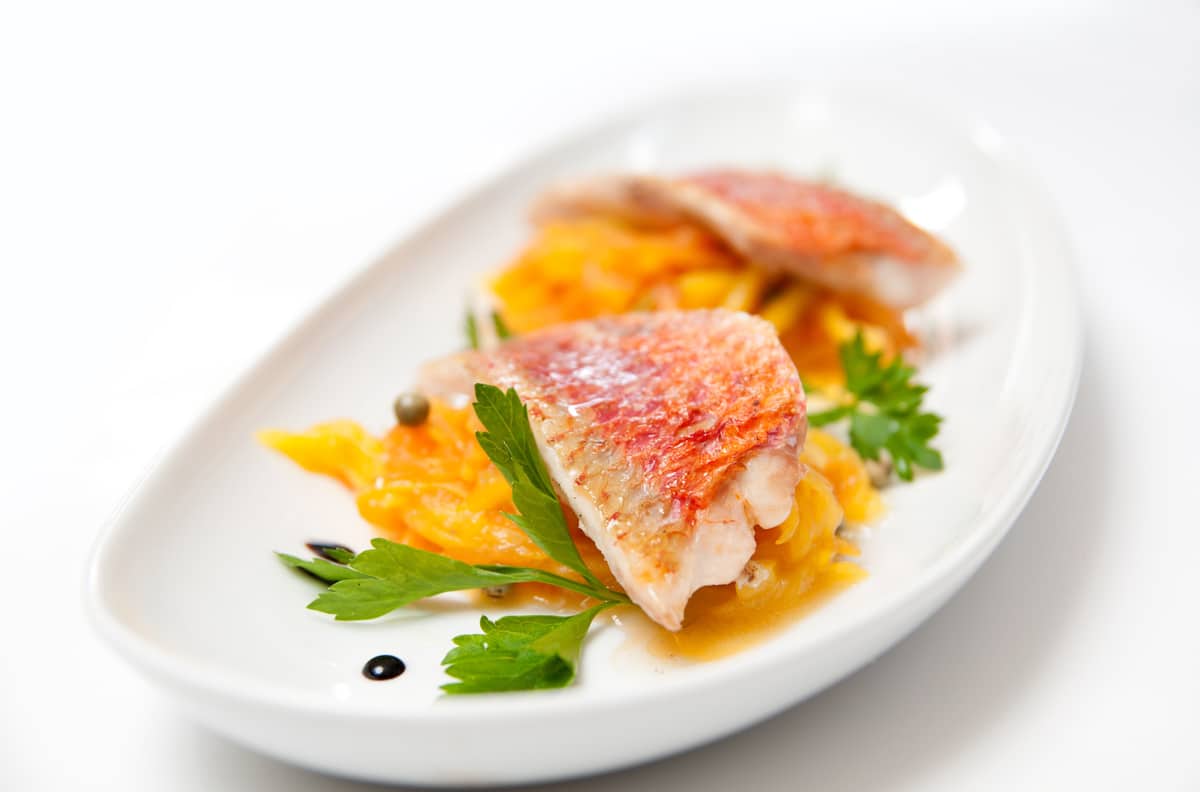
Comparison To Other Fish
The red mullet is a species of fish that has been prized for its delicate flavour and texture. It is closely related to the grey mullet, which has less flavour but is more widely available and cheaper than the red mullet. The two can be distinguished by their size, colouration, and the shape of their noses.
Red mullets are typically larger than grey mullets and have a reddish-orange colouration. Their noses also tend to be longer and more pointed than those of grey mullet.
Regarding taste, red mullet has a milder flavour than other types of fish, such as trout or salmon. Its texture is softer than wide varieties, making it popular among chefs who wish to create dishes that require a delicate touch.
The high price tag associated with red mullet means it is usually consumed in smaller amounts than its cheaper counterpart. However, it can provide an unforgettable culinary experience when cooked correctly due to its unique flavour profile and delicate texture.
History of Red Mullet
The history of red mullets is fascinating, dating back to ancient times. The fish is believed to have originated in the Mediterranean region and was highly sought after by the Greeks and Romans. It has been consumed in Europe since at least the 5th century BC, though it was in the 15th century that its popularity began to spread throughout other parts of Europe.
During the 16th century, red mullet became a mainstay of French cuisine due to its delicate flavour and texture. In particular, it was popular among members of the court of Louis XIV, who favoured it for its mildness and ability to serve as a first course or as part of a more elaborate entrée. Red mullet also gained popularity in English cuisine during this period, with many recipes developed for its preparation.
Red mullet is often grilled or fried in modern-day cuisines and served with various sauces. It can also be cooked in multiple ways, including steaming, baking, poaching or wrapping in aluminium foil and baking in salt.
Red mullet can also be found canned or smoked and prepared in salads or as a topping on pizza. Despite its versatility, red mullet is still quite delicate and requires careful cooking techniques to avoid overcooking it, which could result in dryness.
Conclusion
In conclusion, Red Mullet is an essential source of food for many people around the world due to its tasty flavour and the health benefits associated with its consumption. When considering sustainability choices for seafood consumption, it is generally recommended that these species be eaten only if local regulations allow it since overfishing has become an issue in some regions where it lives.
By following these guidelines when consuming this fish species, we can ensure that we are not contributing to further environmental degradation while still enjoying the taste and nutritional value that Red Mullet brings us.
